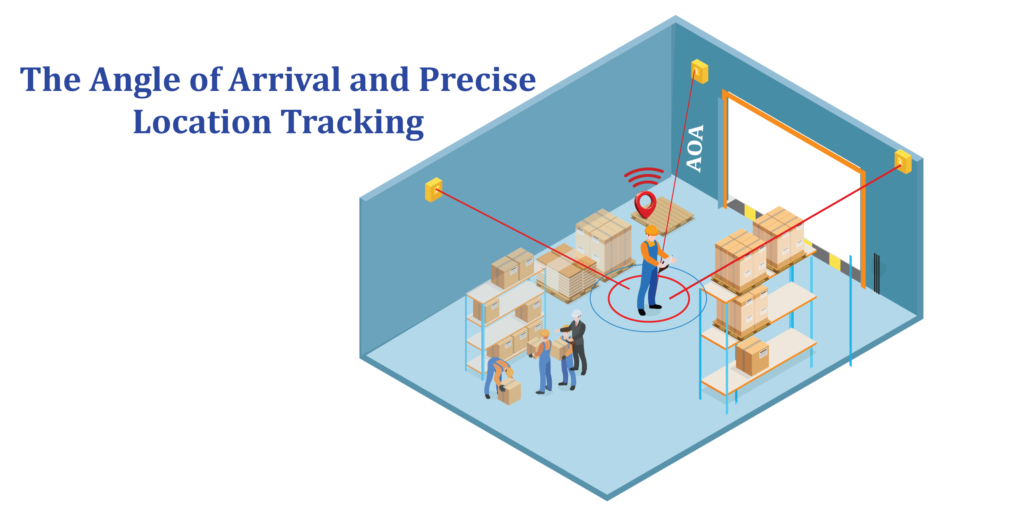When it comes to accurate indoor location data, you can rely on the Angle of Arrival (AoA) method using the Bluetooth 5.1 standard. With AoA, the direction of the incoming signal is measured by observing the angular phase shifts between the antennas (of the receiving device) as they receive the RF signals. This data can be combined with the signal strength metrics (RSSI) to accurately pinpoint the location of an object or an asset in real-time. The location accuracy based on AoA is usually between 20-30 cm but may vary depending on several factors used in the positioning system.
The triangulation-based process in AoA is one of the most used techniques for high precision location data. Read below to discover more about its working principle and use cases.
The Angle of Arrival- What Lays Behind the Technique
When employing the Angle of Arrival (AoA) technique, an asset tag or any other form of transmitting device will transmit a signal using one particular antenna.
The signal will be received by a device, usually a fixed locator, that has antennas neatly packed in an array. Once the signal reaches the array, the receiving equipment collects the necessary inputs to calculate the direction of the incoming signal.
Unlike the low-precision Bluetooth method used for earlier location tracking, the AoA positioning algorithm is ten times more accurate, offering high-precision location data. This ranging-based algorithm is used to determine the direction of the transmitting node signal, along with the exact angle between the anchor node and the unidentified node. Finally, triangulation or similar techniques are employed to measure the location of the unidentified node.
AoA (Angle of Arrival) vs RSSI (Received Signal Strength Indicator)
Both AoA and RSSI are techniques to determine precise positioning data using Bluetooth technology. Even though both of these methods are used for gathering locations metrics, the working principle behind these approaches is different.
When it comes to RSSI, the primary objective is to evaluate the signal strength of the transmitters attached to the assets. To understand the scenario, think about a stone dropped into the water and the resulting waves. These waves get weaker as the distance increases. This procedure of position determination is referred to as lateration, where the distance measurement is in relation to the strength of the signal.
Locating the position of the objects using AoA involves a network-centered structure that employs angular estimation techniques. Here, the signal is transmitted from a single antenna. The incoming radio signal is received by a multiple-antenna equipped device called the locator. When it comes to three-dimensional positioning, the location is estimated through triangulation from a minimum of two locators.
AoA Location Positioning Use Cases
Precise location positioning using AoA helps to enhance the performance efficiency of numerous sectors. The application of AoA location positioning is extensive. Regardless, the most popular use cases of this technique are highlighted below.
- AoA location tracking enables optimization of warehouse operations, including efficient staff and asset monitoring
- Enterprises use this technique to monitor their staff, equipment, and transportation. In addition to this, the process can be utilized for creating virtual borders around hazardous zones to keep unauthorized entries in check
- AoA positioning methods ensure efficient indoor navigation in healthcare facilities, along with improved customer satisfaction rates
- The method also ensures employee safety by defining unsafe areas in the organizational premises
- The sports industry employs this technique for updates on player performance and their location
Accurate tracking using the Angle of Arrival method has opened up numerous opportunities in various sectors. From employee safety to scaling operational performance, proper location positioning has countless benefits.
dSense, an IoT-based location tracking, and positioning solution aids organizations to enhance their business operations through real-time tracking and monitoring of business resources. For further information on the product, check out dSense today.







